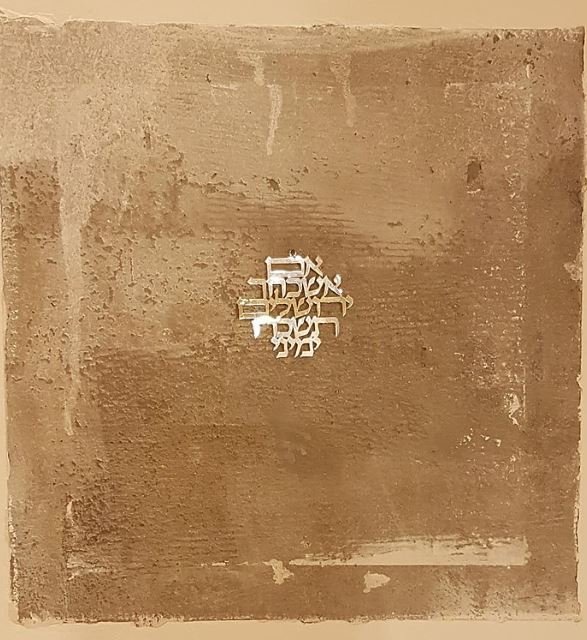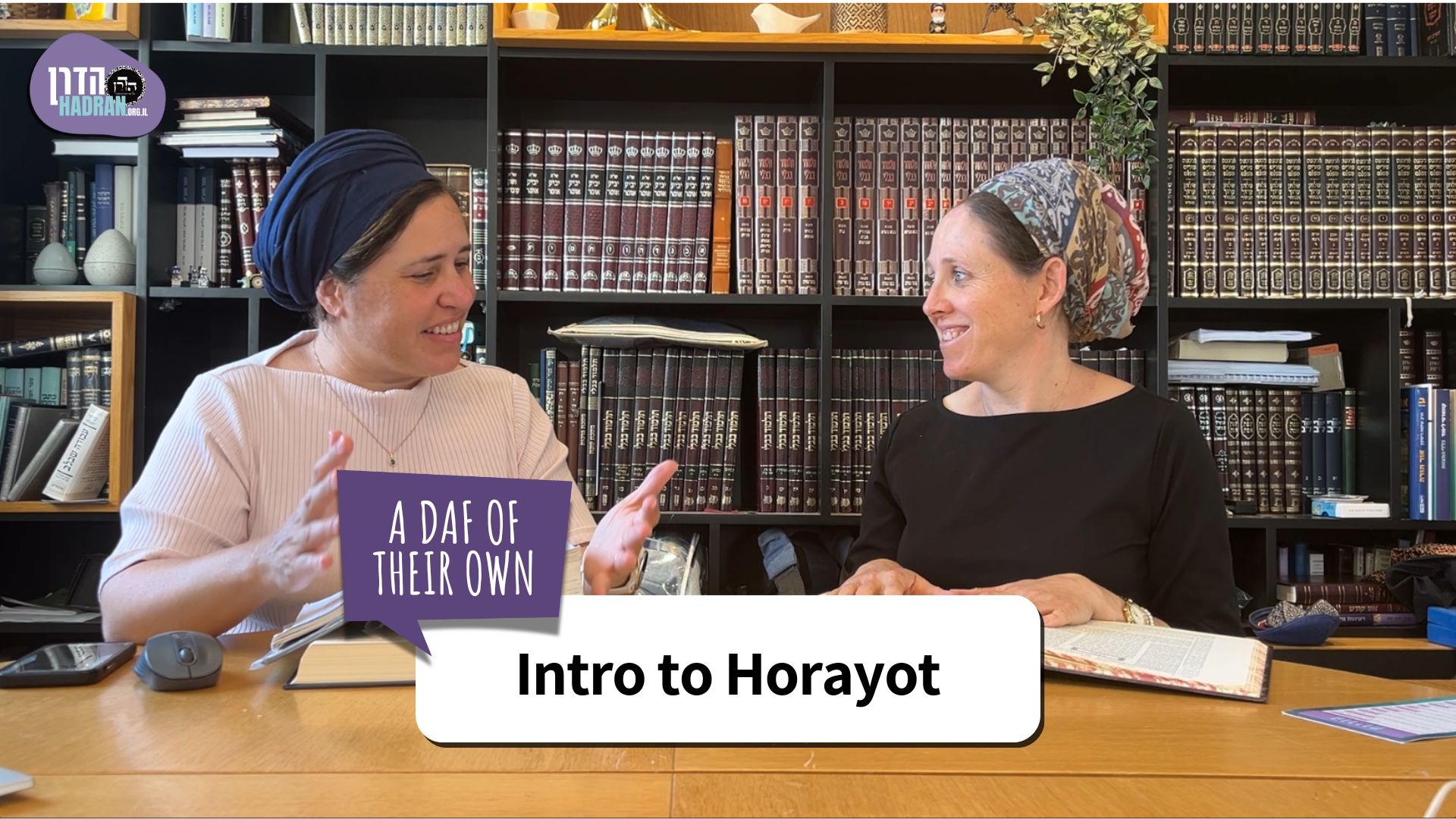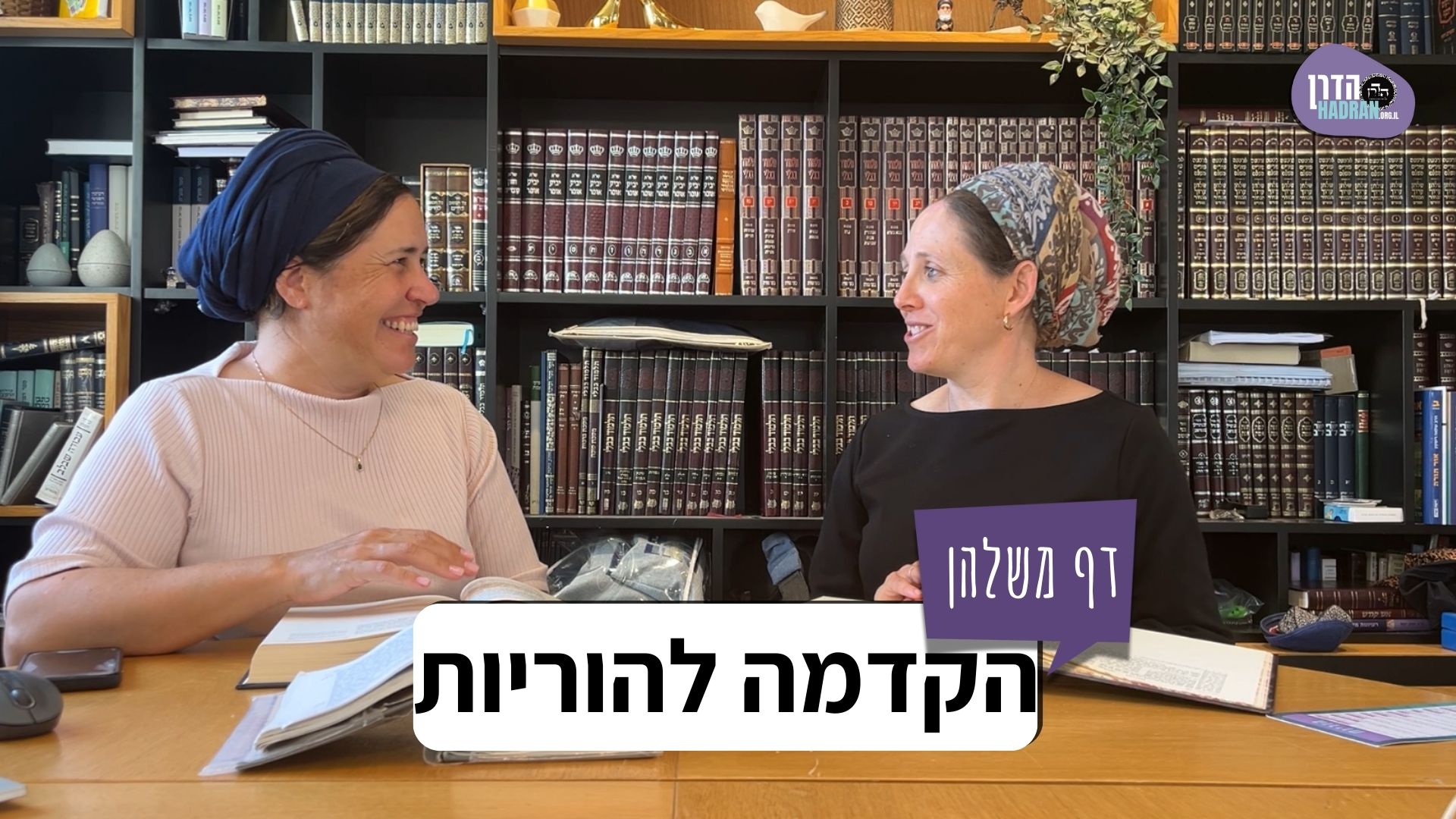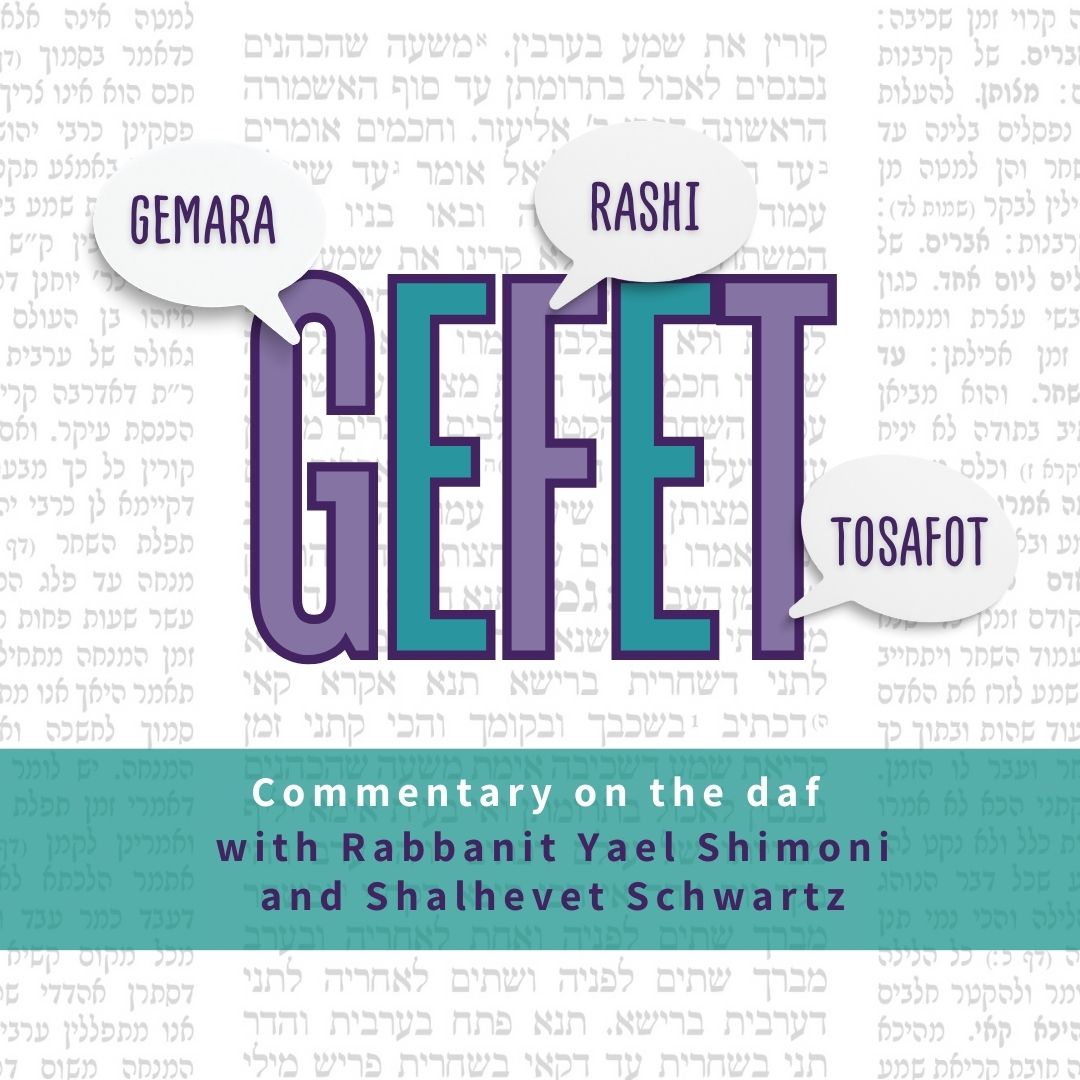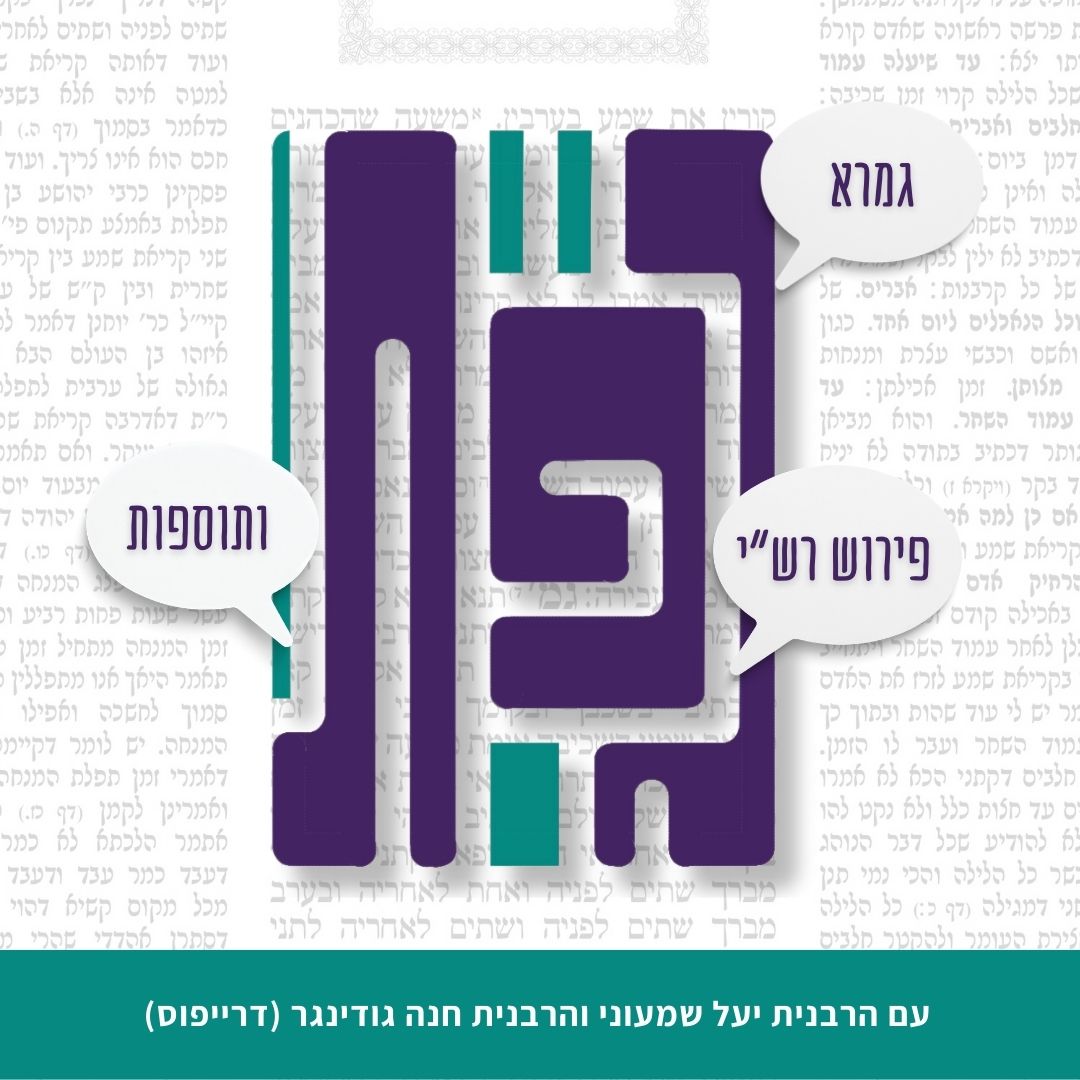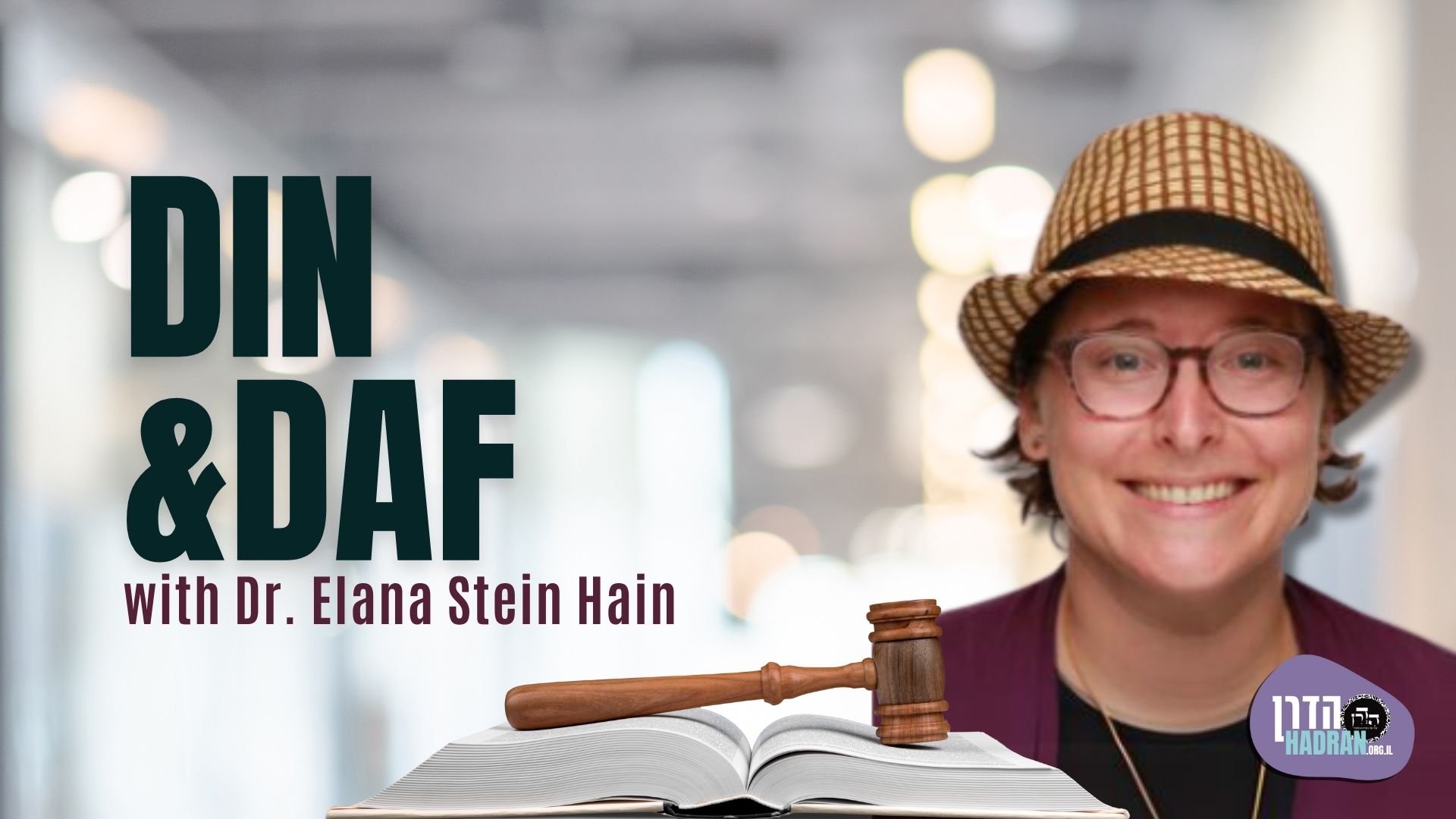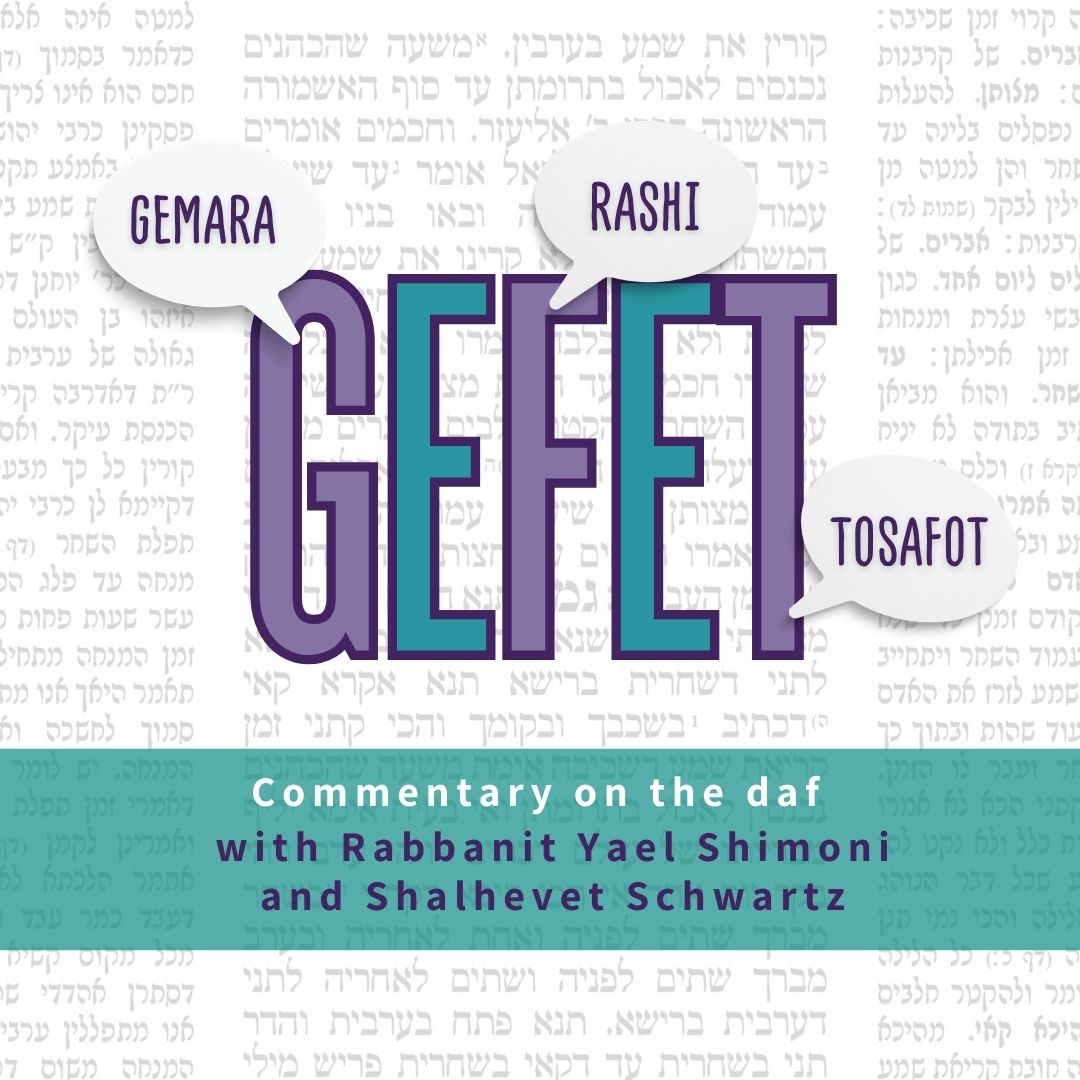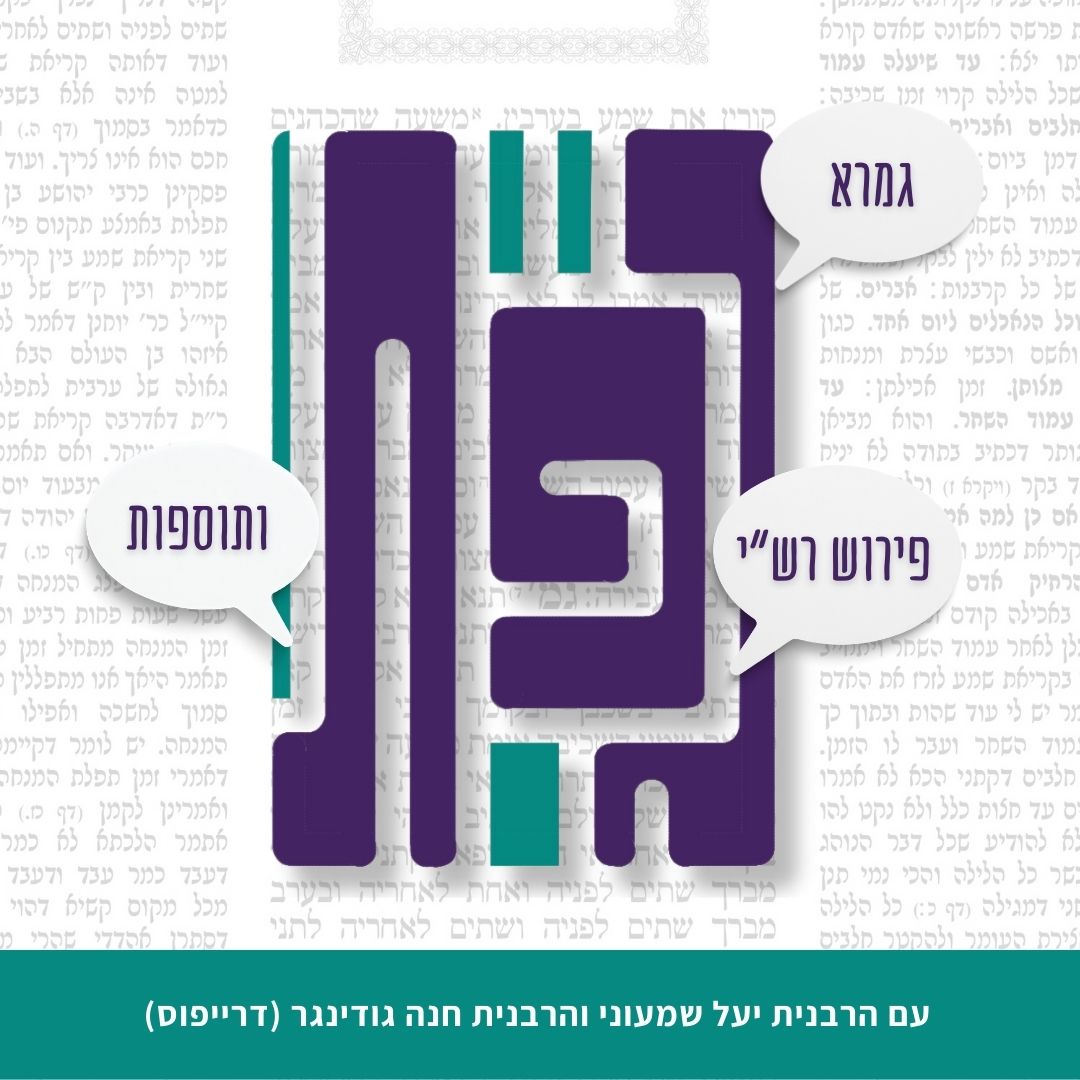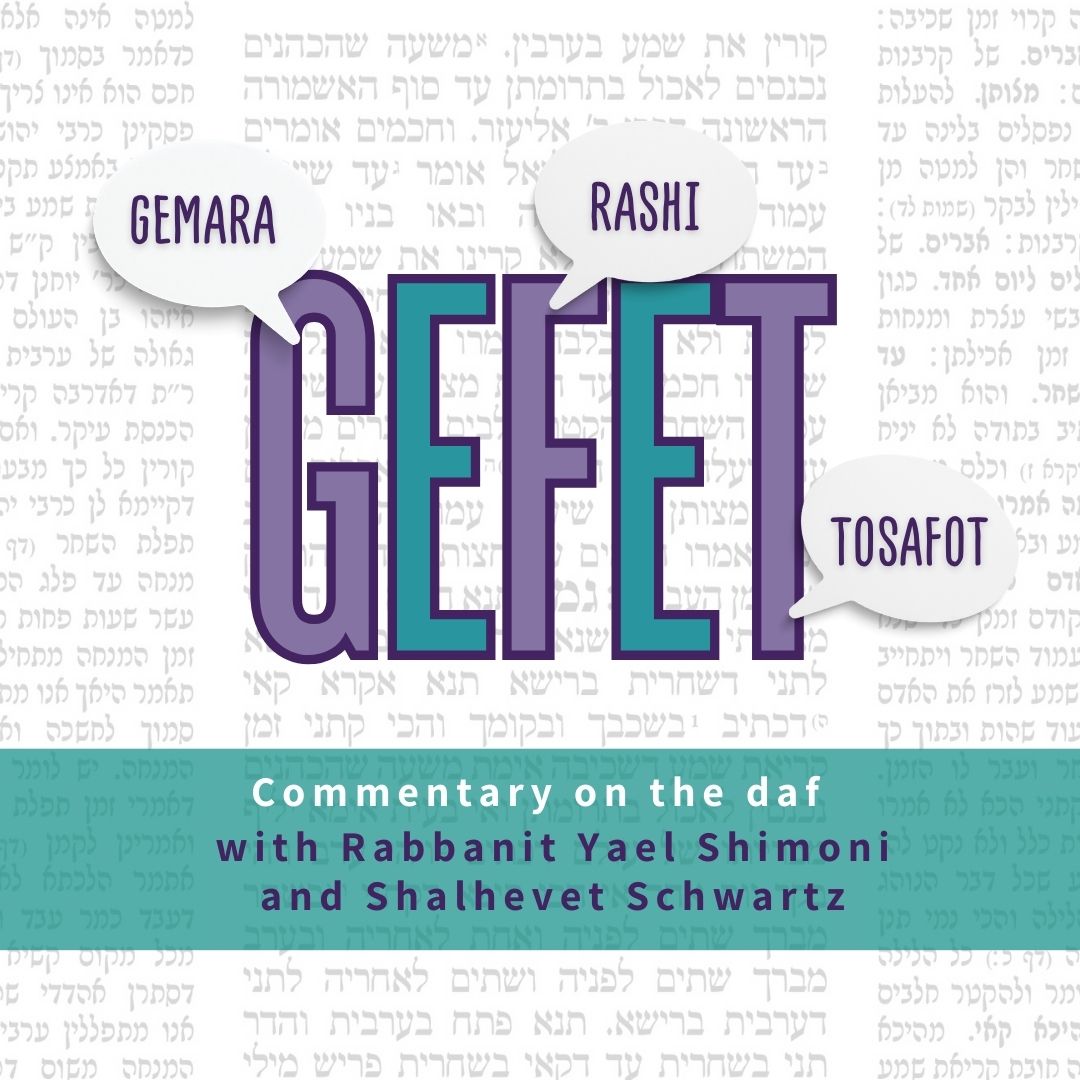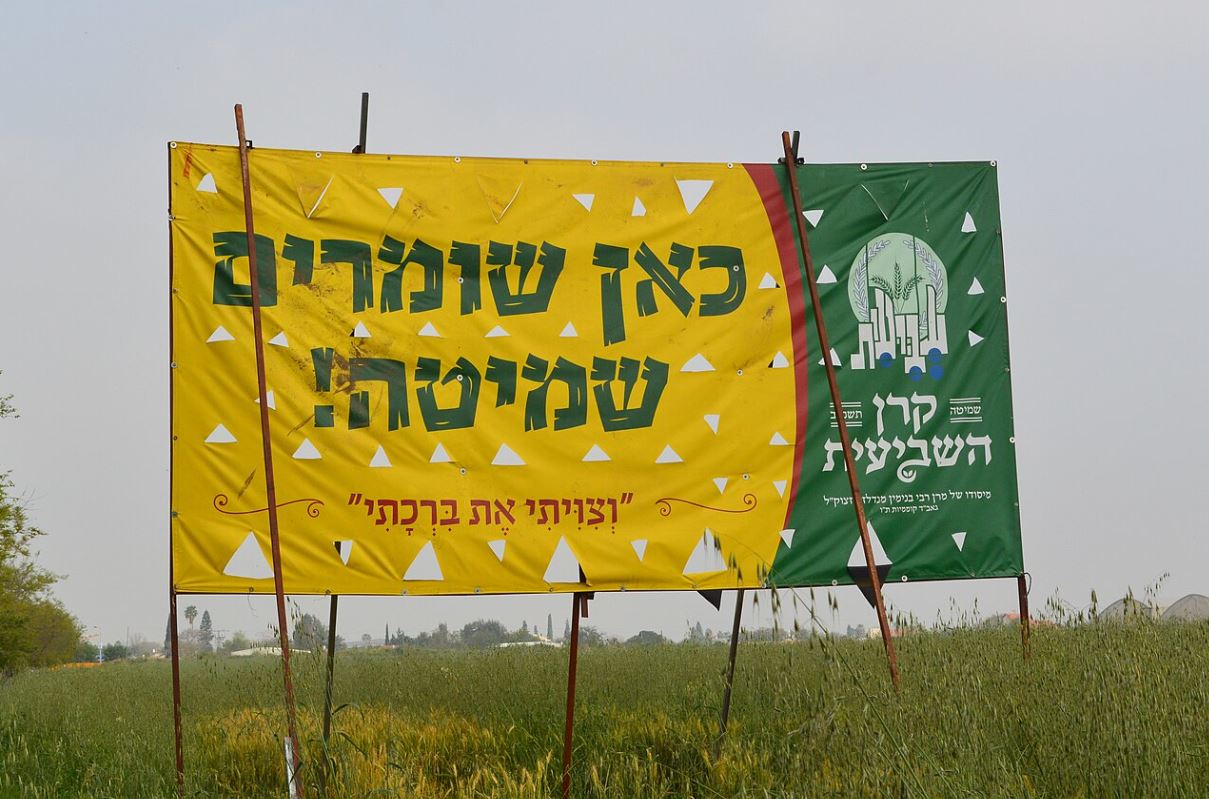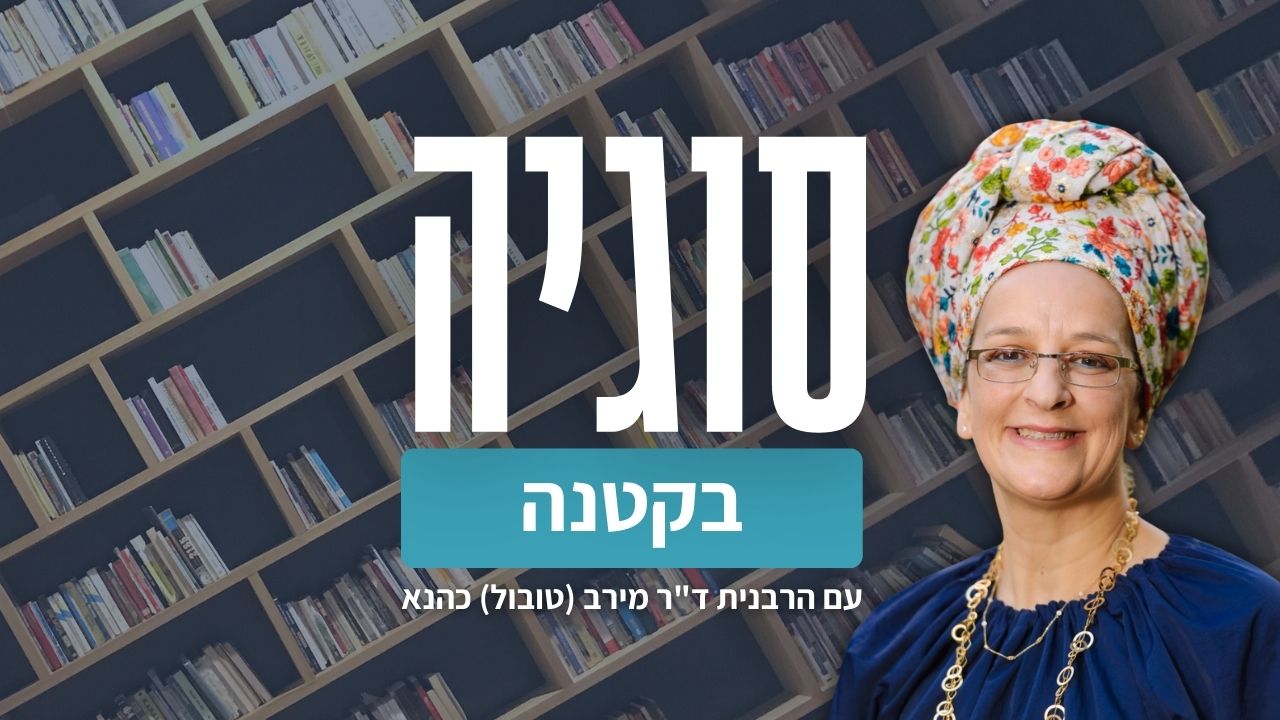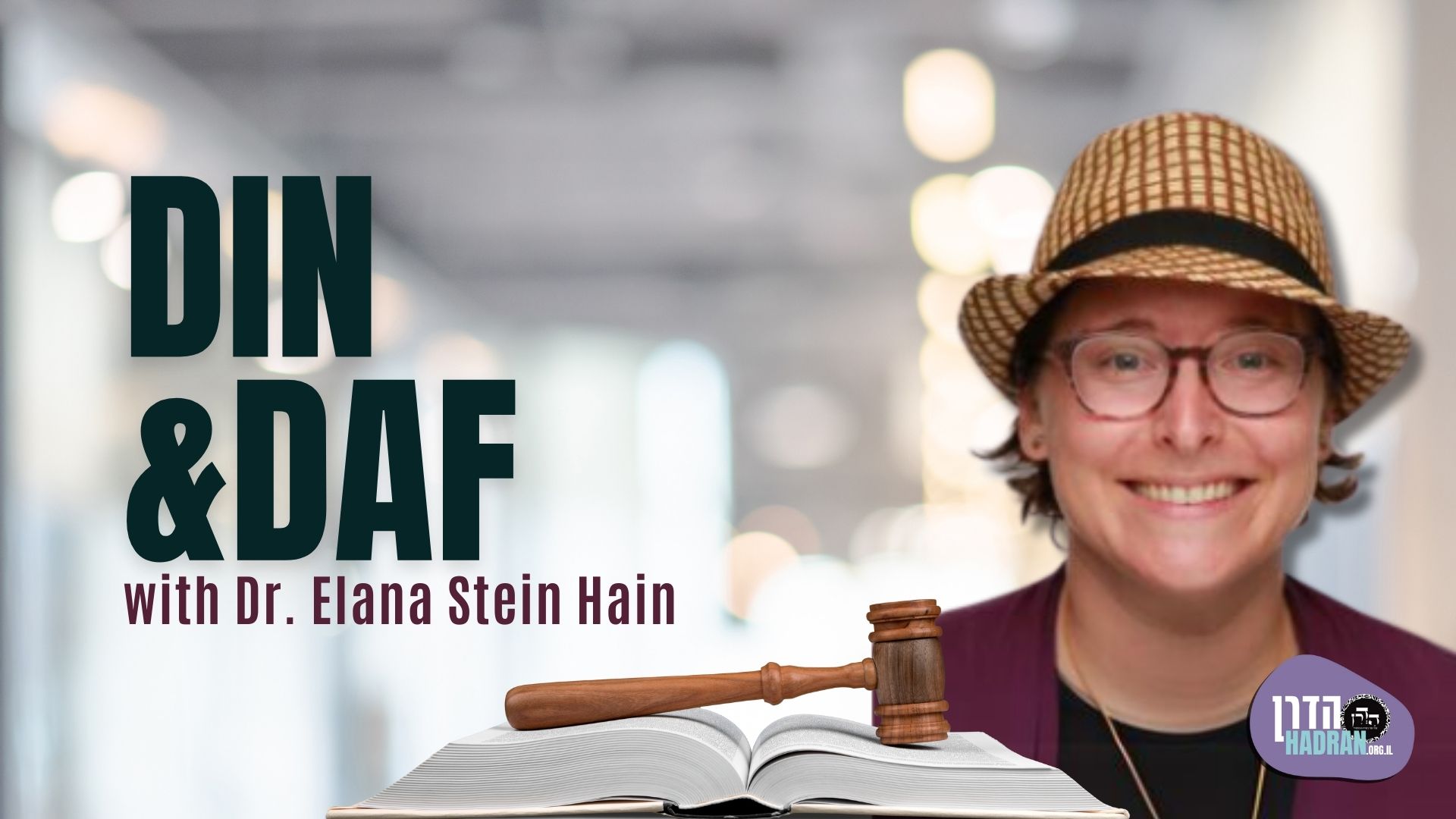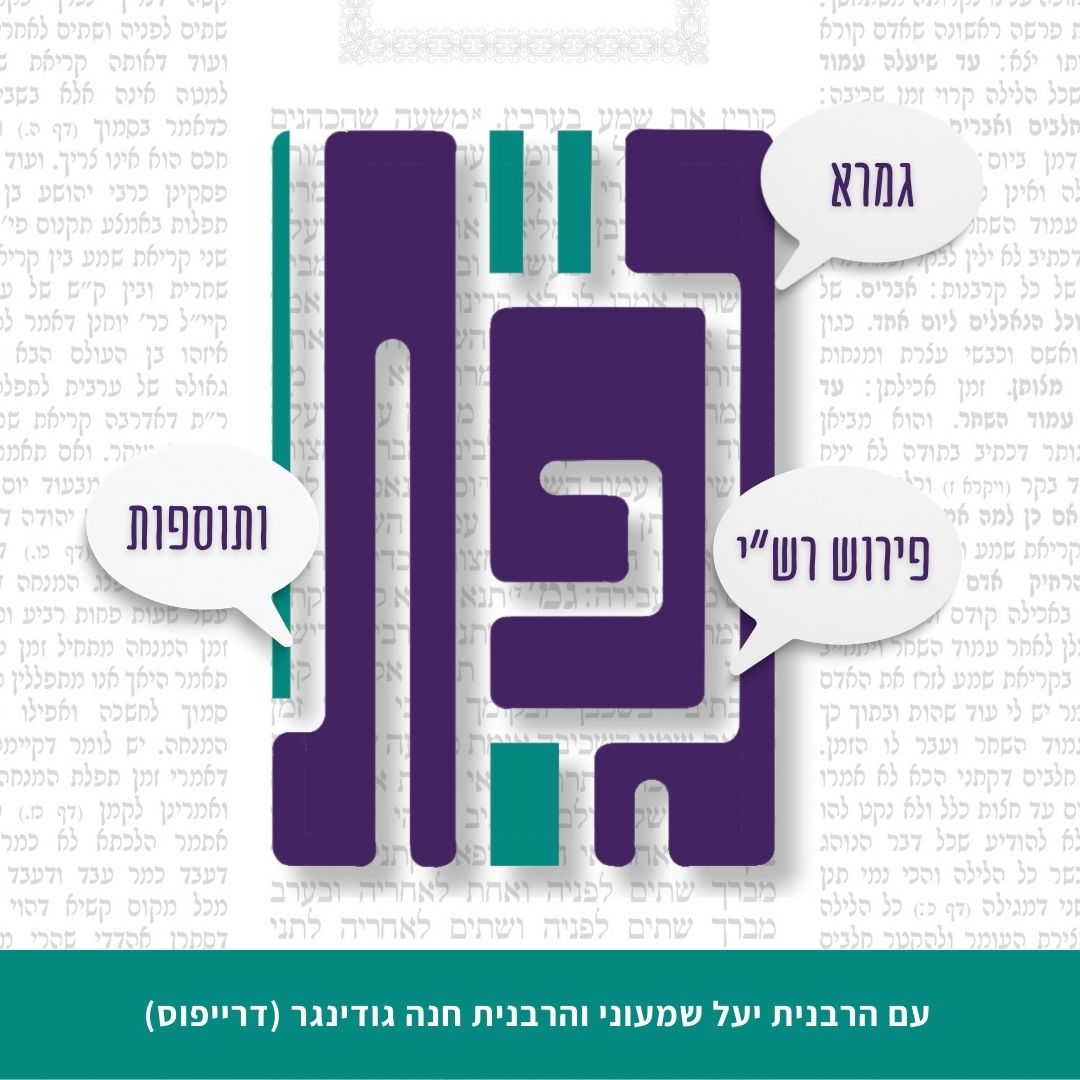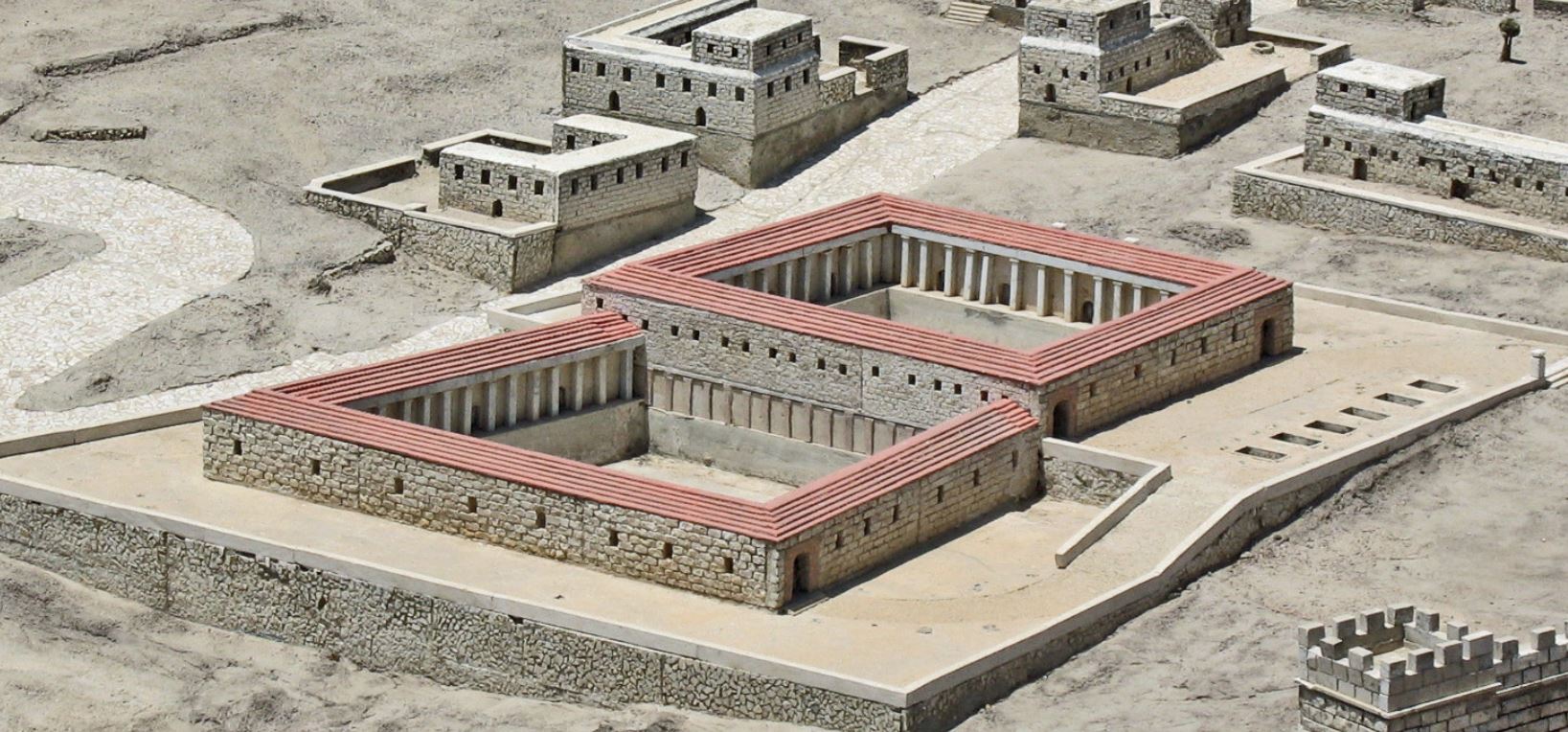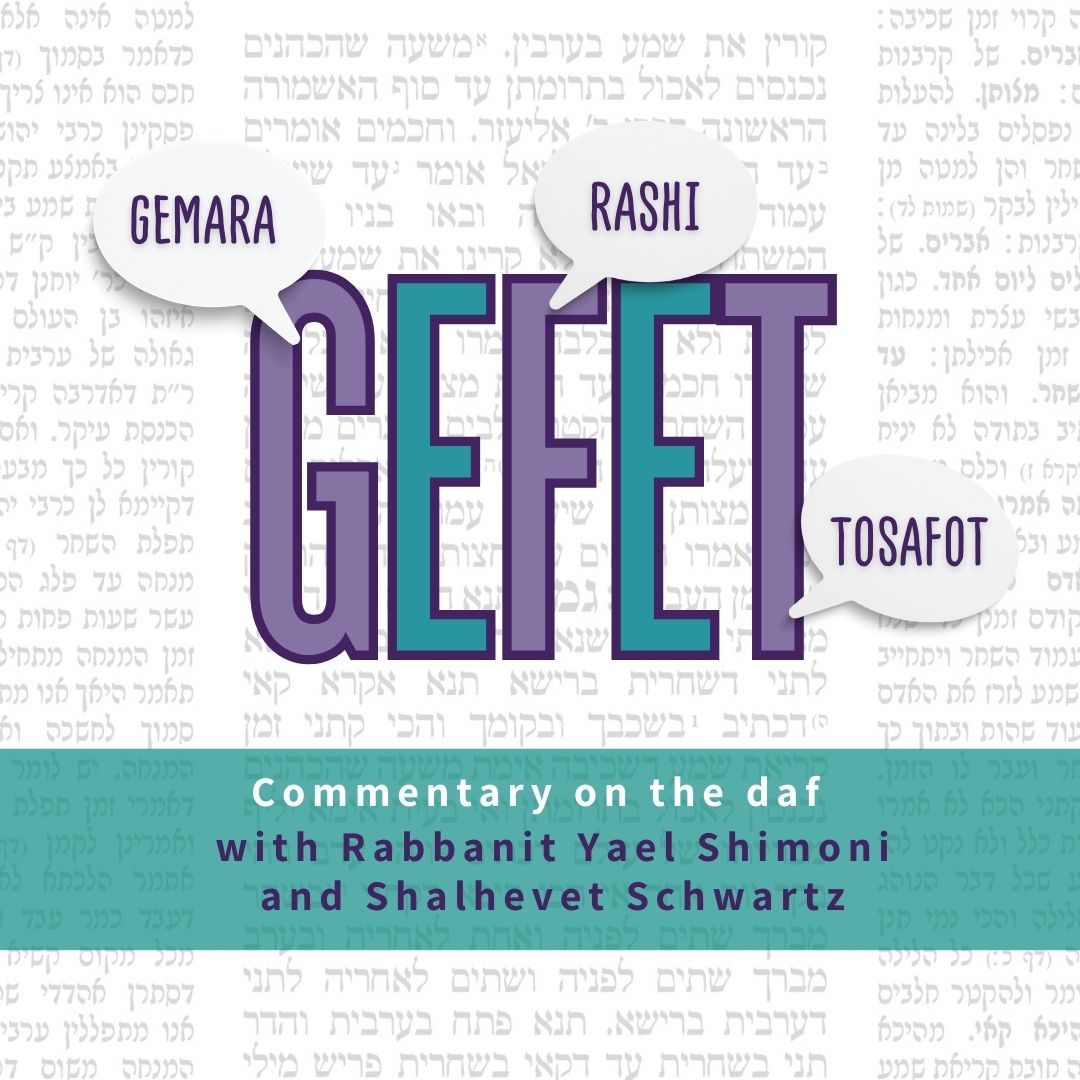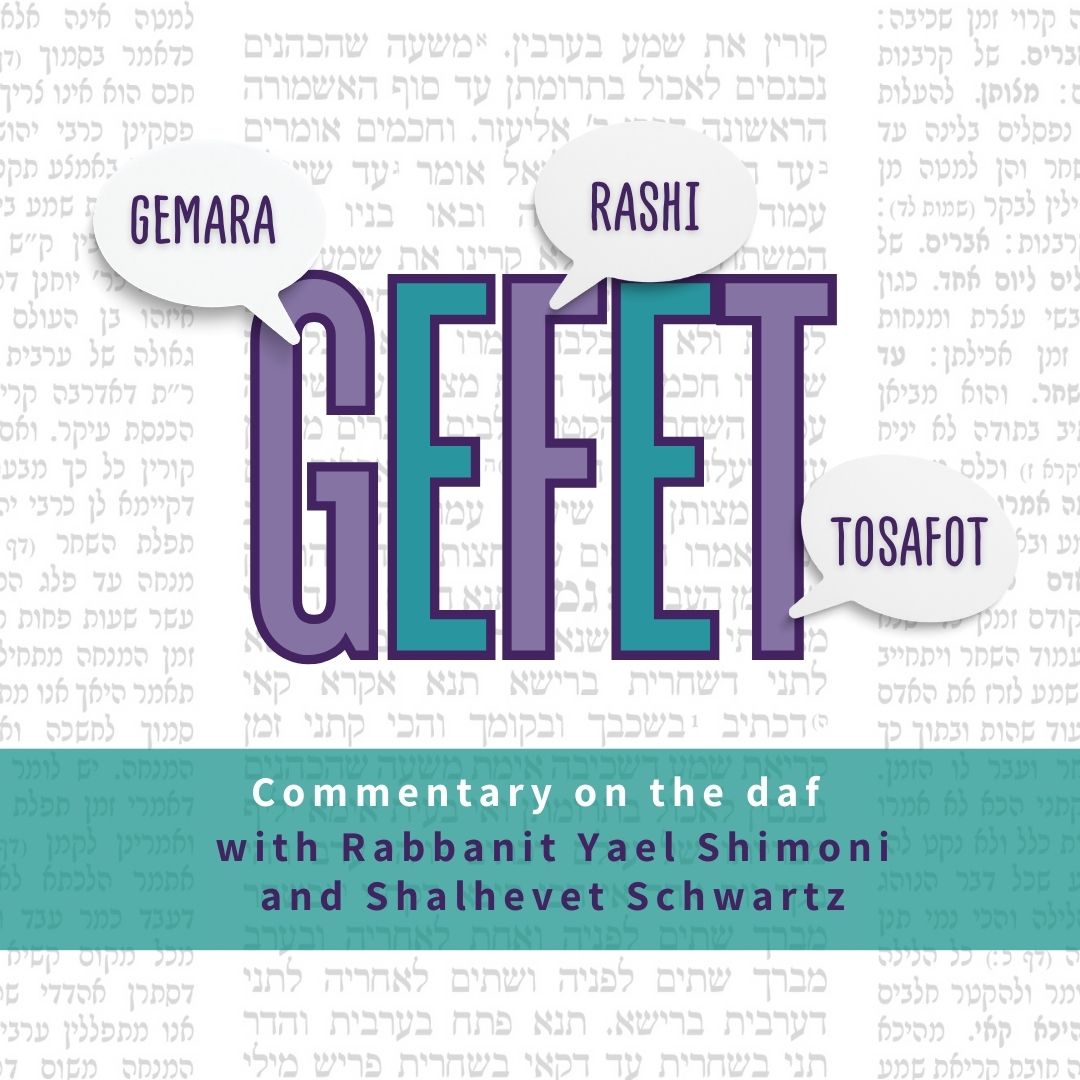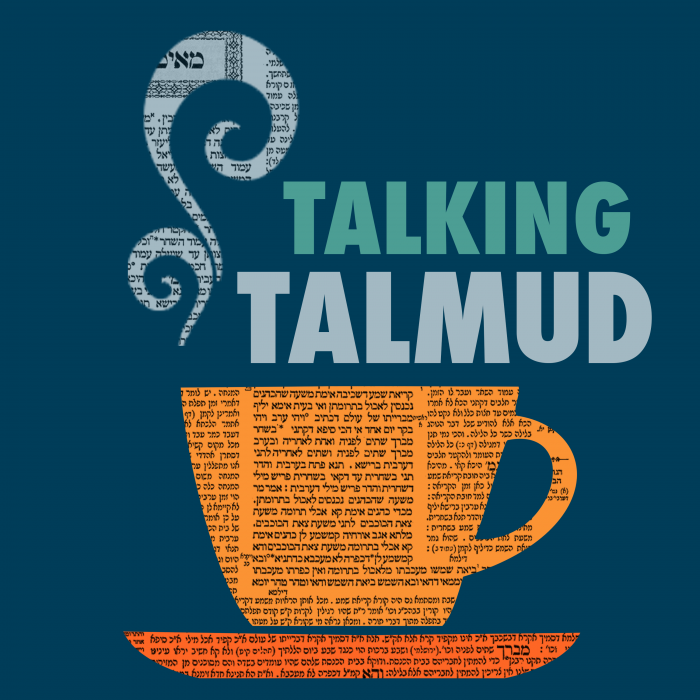Bava Batra
Masechet Bava Batra is sponsored by Lori Stark in loving memory of her mother in law, Sara Shapiro z”l and her father Nehemiah Sosewitz z”l.
Want to dedicate learning? Get started here:

Bava Batra
Masechet Bava Batra is sponsored by Lori Stark in loving memory of her mother in law, Sara Shapiro z”l and her father Nehemiah Sosewitz z”l.
Delve Deeper
Broaden your understanding of the topics on this daf with classes and podcasts from top women Talmud scholars.
New to Talmud?
Check out our resources designed to help you navigate a page of Talmud – and study at the pace, level and style that fits you.
The Hadran Women’s Tapestry
Meet the diverse women learning Gemara at Hadran and hear their stories.
Bava Batra 102
מָצָא שְׁלֹשָׁה – אִם יֵשׁ בֵּינֵיהֶן מֵאַרְבַּע עַד שְׁמוֹנֶה, הֲרֵי זוֹ שְׁכוּנַת קְבָרוֹת, וּבוֹדֵק מִמֶּנּוּ וּלְהַלָּן עֶשְׂרִים אַמָּה. מָצָא אֶחָד בְּסוֹף עֶשְׂרִים אַמָּה – בּוֹדֵק מִמֶּנּוּ וּלְהַלָּן עֶשְׂרִים אַמָּה, שֶׁרַגְלַיִם לַדָּבָר. שֶׁאִילּוּ מִתְּחִלָּה מְצָאוֹ – נוֹטְלוֹ וְאֶת תְּפוּסָתוֹ.
If he found three corpses lying parallel to each other, then if there is between them, i.e., the outer two corpses, a distance of four to eight cubits, then this is presumed to be a graveyard and the corpses may not be removed, and he must examine from that spot outward twenty cubits to discover whether there are other corpses buried there. If he finds even one corpse up to the distance of twenty cubits, he must continue to examine from the place he finds that corpse outward another twenty cubits. He continues to search for additional corpses, even if only one corpse was found within the twenty cubits, as there is a basis for anticipating the matter; it is probable that he has stumbled upon an ancient cemetery. He is not permitted to relocate the corpses, despite that fact that if he had found the single corpse by itself at first, without being aware of the gravesite, he would have been permitted to remove it and its surrounding earth.
אָמַר מָר: מֵאַרְבַּע וְעַד שְׁמוֹנֶה. מַנִּי? אִי רַבָּנַן – הָא אָמְרִי: אַרְבַּע אַמּוֹת עַל שֵׁשׁ! אִי רַבִּי שִׁמְעוֹן – הָא אָמַר: שֵׁשׁ עַל שְׁמוֹנֶה!
The Gemara analyzes that mishna. The Master said: If there is between them a distance of four to eight cubits, then it is presumed to be a graveyard. The reason is that corpses buried in this manner are indicative of the standard layout of a burial chamber. The fact that this is said only when the distance between the corpses is between four and eight cubits assumes that the size of a burial chamber is four cubits by eight cubits. Based on this, the Gemara asks: Whose opinion is this? If it is the opinion of the Rabbis in the mishna above (100b), didn’t they say that the size of a burial chamber is four cubits by six cubits? If it is the opinion of Rabbi Shimon, didn’t he say that a burial cave is six cubits by eight cubits?
לְעוֹלָם רַבִּי שִׁמְעוֹן הִיא, וְהַאי תַּנָּא הוּא – דְּתַנְיָא: מְצָאָן רְצוּפִין, וְאֵין בֵּינֵיהֶן מֵאַרְבַּע אַמּוֹת עַד שְׁמוֹנֶה – יֵשׁ לָהֶן תְּפוּסָה, וְאֵין לָהֶן שְׁכוּנַת קְבָרוֹת. רַבִּי שִׁמְעוֹן בֶּן יְהוּדָה אוֹמֵר מִשּׁוּם רַבִּי שִׁמְעוֹן: רוֹאִין אֶת הָאֶמְצָעִיִּים כְּאִילּוּ אֵינָן, וְהַשְּׁאָר מִצְטָרְפִין מֵאַרְבַּע אַמּוֹת וְעַד שְׁמוֹנֶה.
The Gemara answers: Actually this mishna is in accordance with the opinion of Rabbi Shimon, and it is in accordance with another version of Rabbi Shimon’s opinion, which is cited by this tanna, as it is taught in a baraita: If one found three corpses lying in close succession, and there is not a distance of four cubits to eight cubits between them, i.e., they are lying closer together, they have the halakha of the requirement to move their surrounding earth in which they are buried. But they are not considered to be part of a graveyard, since permanent graves are not placed so closely together. Perforce, their corpses were originally buried there on a temporary basis, but then they were never reinterred. Rabbi Shimon ben Yehuda says in the name of Rabbi Shimon: The corpses in the middle are viewed as if they are not there, i.e., as if they were buried there incidentally, and the other corpses thereby combine to form a graveyard in which corpses are found with a distance of four cubits to eight cubits between them.
בְּמַאי אוֹקֵימְתָּא – כְּרַבִּי שִׁמְעוֹן? אֵימָא סֵיפָא: בּוֹדֵק הֵימֶנּוּ וּלְהַלָּן עֶשְׂרִים אַמָּה. מַנִּי? אִי רַבִּי שִׁמְעוֹן, עֶשְׂרִים וְתַרְתֵּין הָוְיָין! אִי רַבָּנַן, תַּמְנֵי סְרֵי הָוְיָין!
The Gemara asks: In accordance with which opinion did you interpret the mishna? If it is in accordance with the opinion of Rabbi Shimon, then say the latter clause of that mishna: If he finds an area of graves, he must examine from there outward twenty cubits to discover whether there are other corpses buried there. Since the burial formation is indicative of burial within a burial chamber of a catacomb, he should continue to investigate the whole area that would be occupied by a catacomb. The Gemara asks: Whose opinion is this? If it is the opinion of Rabbi Shimon, the distance one should be required to examine would be twenty-two cubits, which is the total length of a catacomb, i.e., two chambers of eight cubits with a courtyard of six cubits between them. If it is the opinion of the Rabbis, the distance one should be required to examine would be eighteen cubits, as each catacomb consists of two chambers of six cubits long with a chamber of six cubits between them.
לְעוֹלָם רַבָּנַן הִיא, וּכְגוֹן דִּבְדַק בַּאֲלַכְסוֹנָא.
The Gemara answers: Actually, the mishna is in accordance with the opinion of the Rabbis, and it is necessary to examine twenty cubits in a case where he examined along the diagonal of the catacomb, which is longer than its length.
וּמִדְּהָא בַּאֲלַכְסוֹנָא – הָא נָמֵי בַּאֲלַכְסוֹנָא; עֶשְׂרִים וְתַרְתֵּי הָוְיָין! חֲדָא בַּאֲלַכְסוֹנָא אָמְרִינַן, תְּרֵי בַּאֲלַכְסוֹן לָא אָמְרִינַן.
The Gemara asks: But since he examined this chamber along the diagonal, this second chamber on the other side of the courtyard should also be examined along the diagonal. If so, that would be twenty-two cubits. The Gemara answers: We say he should examine one chamber along the diagonal, but we do not say he should examine two chambers along the diagonal.
רַב שִׁישָׁא בְּרֵיהּ דְּרַב אִידִי אָמַר: לְעוֹלָם רַבִּי שִׁמְעוֹן הִיא, וְהָכָא בְּמַאי עָסְקִינַן – בְּנִיפְלֵי.
Rav Sheisha, son of Rav Idi, said: Actually, the mishna is in accordance with the opinion of Rabbi Shimon, and here we are dealing with a case where the corpses found were of non-viable newborns buried in a smaller chamber only six cubits long. Adding a courtyard of six cubits and another regular-sized chamber of eight cubits yields a total length of the catacomb of twenty cubits.
וּמִדְּהָא בְּנִיפְלֵי – הָא נָמֵי בְּנִיפְלֵי; תַּמְנֵי סְרֵי הָוְיָין! חֲדָא בְּנִיפְלֵי אָמְרִינַן, תַּרְתֵּי בְּנִיפְלֵי לָא אָמְרִינַן.
The Gemara asks: But since this is dealing with a chamber that was created for burying non-viable newborns, there too, with regard to that chamber, on the other side of the courtyard, we are dealing with a chamber created for non-viable newborns as well. Therefore, the total length of the catacomb would be eighteen cubits. The Gemara answers: We say that perhaps one of the chambers is for non-viable newborns, but we do not say that two chambers might have been constructed for non-viable newborns.
וְרָמֵי דְּרַבָּנַן אַדְּרַבָּנַן, וְרָמֵי דְּרַבִּי שִׁמְעוֹן אַדְּרַבִּי שִׁמְעוֹן –
§ Above, the Gemara cited a baraita that relates a dispute between Rabbi Shimon and the Rabbis with regard to three corpses buried close together. The Rabbis hold that this is not considered a graveyard, whereas Rabbi Shimon maintains that it can be. And the Gemara raises a contradiction from another ruling of the Rabbis against this ruling of the Rabbis, and it also raises a contradiction from another ruling of Rabbi Shimon against this ruling of Rabbi Shimon.
דְּתַנְיָא: כֶּרֶם הַנָּטוּעַ עַל פָּחוֹת מֵאַרְבַּע אַמּוֹת – רַבִּי שִׁמְעוֹן אוֹמֵר: אֵינוֹ כֶּרֶם. וַחֲכָמִים אוֹמְרִים: הֲרֵי זֶה כֶּרֶם, וְרוֹאִין אֶת הָאֶמְצָעִיִּם כְּאִילּוּ אֵינָן.
As it is taught in a mishna (Kilayim 5:2): With regard to a vineyard that is planted on an area where there is less than four cubits of open space between the vines, Rabbi Shimon says: It is not considered to be a vineyard with regard to the prohibition of diverse kinds and other halakhot, as it is overcrowded. And the Rabbis say: This is considered to be a vineyard, and the reason for this is that the middle vines are viewed as if they are not there, and the outer vines meet the requirements for a vineyard. Therefore, it is prohibited to plant other crops anywhere in that area.
קַשְׁיָא דְּרַבָּנַן אַדְּרַבָּנַן, וְקַשְׁיָא דְּרַבִּי שִׁמְעוֹן אַדְּרַבִּי שִׁמְעוֹן!
The ruling of the Rabbis in this mishna is difficult, as it is contradicted by the ruling of the Rabbis in the baraita, as there the Rabbis did not say: The middle ones are viewed as if they are not there. And the ruling of Rabbi Shimon in this mishna is difficult, as it is contradicted by the ruling of Rabbi Shimon in the baraita, as there he did say: The corpses in the middle are viewed as if they are not there.
דְּרַבִּי שִׁמְעוֹן אַדְּרַבִּי שִׁמְעוֹן לָא קַשְׁיָא – הָתָם, לָא נָטְעִי אִינָשֵׁי אַדַּעְתָּא לְמִיעְקַר; הָכָא, זִימְנִין דְּמִיתְרְמֵא לֵיהּ בֵּין הַשְּׁמָשׁוֹת, וּמִיקְּרֵי וּמַנְּחִי לֵיהּ.
The Gemara answers: The fact that one ruling of Rabbi Shimon is contradicted by the other ruling of Rabbi Shimon is not difficult. There, with regard to vineyards, Rabbi Shimon holds that middle vines cannot be disregarded, as people do not plant vines with the intention of uprooting them. But here, with regard to burial, sometimes it happens that one has to bury a corpse at twilight just before the onset of Shabbat, and indiscriminately inters the body between other corpses with the intention of reburying it at a later date.
דְּרַבָּנַן אַדְּרַבָּנַן נָמֵי לָא קַשְׁיָא – הָכָא, כֵּיוָן דְּמִינַּוַּל – לָא מִקְּרֵי קֶבֶר; הָתָם, מֵימָר אָמַר: הֵי מִינַּיְיהוּ דְּשַׁפִּיר – שַׁפִּיר, וּדְלָא שַׁפִּיר – לֶיהֱוֵי לְצִיבֵי.
Similarly, the fact that one ruling of the Rabbis is contradicted by the other ruling of the Rabbis is not difficult. Here, with regard to burial, since it is a disgrace to bury bodies so close together, it is not called an area of graves. But there, with regard to vineyards, the owner of the vineyard says to himself: Whichever of the vines will flourish, will flourish and I will leave them, and whichever ones do not flourish, I will uproot them and they will be for firewood.
הֲדַרַן עֲלָךְ הַמּוֹכֵר פֵּירוֹת
הָאוֹמֵר לַחֲבֵירוֹ: ״בֵּית כּוֹר עָפָר אֲנִי מוֹכֵר לָךְ״ – הָיוּ שָׁם נְקָעִים עֲמוּקִּים עֲשָׂרָה טְפָחִים, אוֹ סְלָעִים גְּבוֹהִין עֲשָׂרָה טְפָחִים – אֵינָן נִמְדָּדִין עִמָּהּ. פָּחוֹת מִכָּאן – נִמְדָּדִין עִמָּהּ. וְאִם אָמַר לוֹ: ״כְּבֵית כּוֹר עָפָר״ – אֲפִילּוּ הָיוּ שָׁם נְקָעִים עֲמוּקִּים יוֹתֵר מֵעֲשָׂרָה טְפָחִים, אוֹ סְלָעִים גְּבוֹהִין יוֹתֵר מֵעֲשָׂרָה טְפָחִים, הֲרֵי אֵלּוּ נִמְדָּדִין עִמָּהּ.
MISHNA: If one says to another: I am selling you a plot of earth of the size required for sowing one kor of seed [beit kor], and there on that plot there were crevices [neka’im] ten handbreadths deep or rocks ten handbreadths high, they are not measured together with the rest of the field. Rather, the buyer must be provided with land measuring a beit kor exclusive of those crevices or rocks. If the crevices or rocks measured less than ten handbreadths, they are measured together with the rest of the field. But if the seller said to the buyer: I am selling you a plot of earth that is about the size of a beit kor, then even if there on that plot there were crevices deeper than ten handbreadths or rocks higher than ten handbreadths, they are measured together with the rest of the field.
גְּמָ׳ תְּנַן הָתָם: הַמַּקְדִּישׁ שָׂדֵהוּ בִּשְׁעַת הַיּוֹבֵל, נוֹתֵן לוֹ לְבֵית זֶרַע חוֹמֶר שְׂעוֹרִים – חֲמִשִּׁים שֶׁקֶל כָּסֶף. הָיוּ שָׁם נְקָעִים עֲמוּקִּים עֲשָׂרָה טְפָחִים, אוֹ סְלָעִים גְּבוֹהִין עֲשָׂרָה טְפָחִים –
GEMARA: We learned in a mishna elsewhere (Arakhin 25a): With regard to one who consecrates his ancestral field during the time that the halakhot of the Jubilee Year are practiced, if he wishes to redeem the field he must give the Temple treasurer fifty silver shekels for every place that is fit for sowing a ḥomer of barley seed, which is the biblical equivalent of a kor, for all the years of the Jubilee cycle, as this is the sum fixed by the Torah for this purpose (see Leviticus 27:16). But if there were crevices ten handbreadths deep there, in the field, or rocks ten handbreadths high,


